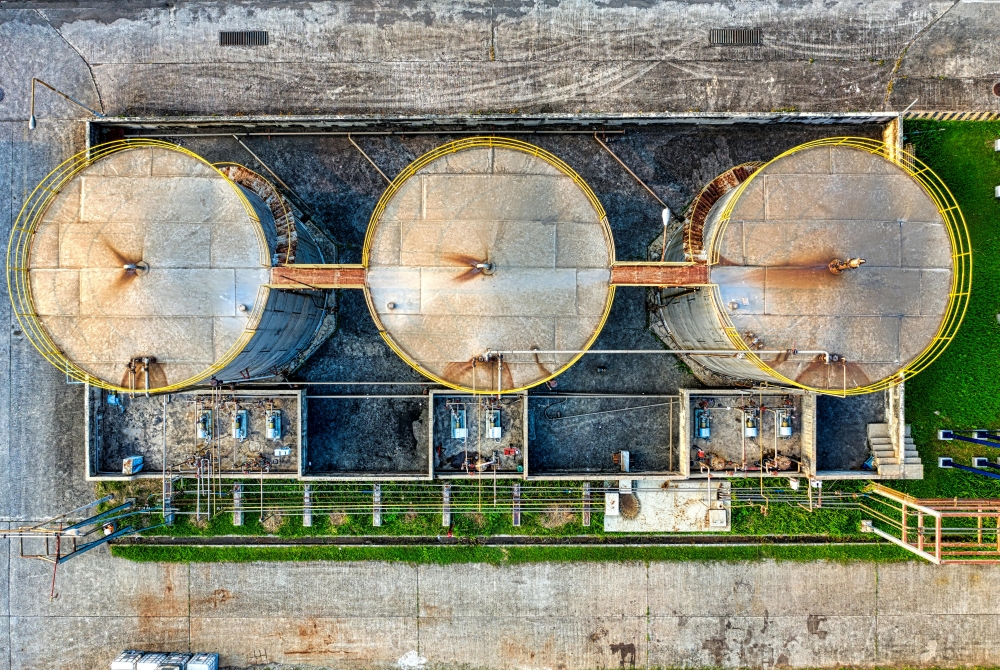Commodity markets are a great way to diversify your portfolio with assets that prove to be a hedge against inflation.
In March, gold soared, oil prices saw a surge, and commodity markets saw a lot of upside.
Join Finbok as we analyze the commodity market in March.
Commodity trading – Gold market
Gold prices rose on March 13, buoyed by a weaker dollar, as investors kept a preference for steep Federal Reserve interest rate cuts by June.
This comes amid warnings of higher US inflation data and simmering geopolitical concerns that saw appetite for the precious metal remain high.
Spot gold was up 0.7% to $2,172.41 an ounce by midday EDT, while U.S. gold futures added 0.6% to $2,178.00.
At the same time, the dollar’s index, which represents its value against its major trading partners, fell by a touch of 0.1%, a decline that made gold cheaper for international buyers.
Gold trading – record highs
Gold prices had retreated from recent lofty peaks and fell the most in a single session since February 13. This comes after a report showed that US consumer prices surged in February, providing further evidence that inflationary pressures are building.
Inflation generally leads to rising bond yields and higher interest rates, which can crimp gold, a non-yielding asset, and turn it less attractive.
However, gold also serves as an inflation hedge.
Commodity trading: Gold – inflation on watch
Interestingly, despite the inflation scare, the market still favours a rate cut from the Fed this June, with the number rising to 65%, down from 72% before the publication of the inflation figure, according to the CME Group’s FedWatch Tool.
Three key economic reports scheduled for March 14 will occupy attention in the US, including retail sales, the producer price index, and initial jobless claims for the week.
Meanwhile, the price of other precious metals has been climbing.
Platinum added 1.8% to stand at $940.85 per ounce, while palladium picked up 1.5% to $1,057.15. Silver shot up more than 3% to $24.94 per ounce.

Commodity trading – surge in oil prices
Oil prices jumped about 2% on March 13 to their highest level since November, bolstered by a sharp reduction in crude inventories.
Oil prices are being affected by a more-than-expected decline in US gasoline stocks and worries that supply could be further disrupted by Ukrainian strikes on Russian refineries.
Brent futures rose $1.97 or 2.4%, to $83.89 a barrel, while U.S. West Texas Intermediate (WTI) crude added $2.07, or 2.7%, to $79.63, pushing Brent toward its highest close since early November 2023.
Moreover, crude stockpiles fell, with the US Energy Information Administration reporting a withdrawal of 1.5 million barrels for the week ending March 8 – vs a 1.3 million barrel gain, and also different than the American Petroleum Institute’s 5.5 million barrel drop.
Commodity trading: Fuel futures
Gasoline futures led an energy sector rebound, up nearly 2.8% to the highest level since September 2023 and a 0.6% gain for oil futures.
This comes after the Energy Information Administration (EIA) reported that 5.7 million barrels of gasoline were removed from stockpiles in February 2024, more than five times analysts’ forecast of a 1.9-million barrel pull.
Skyrocketing gasoline prices pushed the differences between refining costs and product prices up, with gasoline spreads settling at the highest since August and September 2023, respectively.
Commodity trading: Ukrainian war hits fuel prices
As the Ukrainians continue attacking Russian oil refineries, especially Rosneft’s biggest refinery in Tuapse, Black Sea – Ukraine once again struck it just two days ago – they face the prospect of reducing Russian diesel exports and, perhaps, having Russia import gasoline.
These factors could further hike global commodity prices.
Meanwhile, there is greater optimism that US inflation levels will prevent central bankers from raising interest rates a lot more, thus ruling out mid-year interest rate cuts.
This was seen as helping spark commodity prices and broader market sentiments, as lower rates also fuel economic growth – and more demand for oil.

Commodity trading: OPEC – Oil demand could increase in 2024
The Organization of the Petroleum Exporting Countries again kept its world oil demand-growth projection at 2.25 million barrels per day for 2024.
It’s a number far higher than that of many other commodity market forecasters.
The International Energy Agency will update its lower demand growth outlook soon.
OPEC was optimistic about comments made by the International Energy Agency underscoring the importance of oil security, even though the two organizations disagree on future oil demand.
IEA comments on the need to ensure sufficient supplies, a critical balance between supply and demand, and to consider all sources, reflect long-standing differences between an IEA seen as an advocate of industrialized countries and OPEC.
It has been calculating lower demand growth, which has been at odds with OPEC’s high-demand ‘vast need’ calculations, and with OPEC’s view that there’s a need for more new oil investment.
OPEC pointed to the IEA’s understanding of oil continuing to ‘dominate’ global energy, and while the IEA predicts oil’s ‘peak demand’ by 2030, OPEC’s outlook goes to 2045 and sees no demand peak.
Commodity trading: Oil trading – supply disruption
The IEA released a report on oil’s declining share in world energy demand but warns of “the potential economic and social consequences of supply disruption.”
Meanwhile – OPEC criticized the IEA’s stance against new investment in oil and gas development because it ‘was increasing uncertainty by upping the risk of “energy chaos”, rather than security’.
The difference between their demand outlooks is now the largest for more than 16 years The IEA and OPEC (also including allies such as Russia) found themselves pulling in different directions last year.
In December 2022, OPEC+ – an alliance of OPEC members and Russia, that sets oil production quotas – announced that it was abandoning using IEA data for oil-market monitoring.
Emissions problems to hit the energy commodity industry
When the world convened at the climate summit COP28 in the United Arab Emirates in November, the calls together for a fossil-fuel phaseout – along with the urgency of reducing greenhouse gas emissions to avert catastrophic global warming – were undeniable.
In 2021, the organization originally known for encouraging investment in fossil fuels, published a critical report.
Among its key recommendations was for a halt to investment in oil, gas, and coal projects if the world was to stand a chance of limiting warming to below 1.5C compared with pre-industrial levels (which is needed to achieve so-called net-zero emissions by mid-century).
OPEC made clear its commitment to oil market stability and supply security, recalling ‘the spare capacity of [its] members, which plays a key role in dealing with unforeseen supply interruptions.’
Saudi Arabia has always provided the bulk of this spare capacity, and recently the United Arab Emirates has helped, too.
The IEA promotes clean energy growth as a means to increase energy security, while Opec’s goal is to promote oil stability and supply security.
Commodity industry – oil production
Crude oil inventories in the US declined last week as refineries boosted production and gasoline stockpiles plummeted on higher demand, the US Energy Information Administration reported on Wednesday.
It’s the first decline in six weeks, with crude stockpiles falling by 1.5 million barrels to 447 million barrels for the week ending on March 8. Analysts surveyed by Reuters had predicted a 1.3 million-barrel increase.
Meanwhile, gasoline supplies tumbled, falling by 5.7 million barrels to 234.1 million barrels, nearly three times more than the 1.9 million-barrel decline analysts anticipated.
All told it marked the sixth consecutive weekly decline in the weekly supply of motor fuel, and stocks at the US Gulf Coast are now the lowest seen since November 2023.
Only gasoline supplies were especially snug – for example, Giovanni Staunovo of UBS noted on March 17 that gasoline would be ‘even tighter in the runup to the summer driving season’.
Total product supplied of finished motor gasoline was also on the up, climbing 0.3 % to almost 9 million bpd – the first time above the level that year.
Commodity trading: Refinery production increased
Furthermore, refinery activity has stepped up, resulting in an increase of 390,000 barrels per day in crude runs and an increase of 1.9 percentage points in utilization rates, which today is at 86.8 % of the total capacity.
The EIA’s report led to rising oil prices. U.S. gasoline futures surged 2.7% to $2.7 per gallon, a level last reached in September.
US crude oil rose 2.3%, to $79.32 a barrel, and Brent crude rose 2.1% to $83.65, also a record.
Stocks at the Cushing, Oklahoma, hub, the delivery point for US futures, decreased by 220,000 barrels.
Domestic crude output declined by 100,000 barrels per day to 13.1 million barrels a day after falling from the record of 13.3 million barrels per day, set in February.
Commodity trading: Oil imports down
On a net basis, US imports of crude fell – down 241,000 barrels a day from the previous week to 2.3 million barrels a day – and crude imports alone hit 5.5 million barrels a day, the lowest since March.
Distillate inventories – a proxy for diesel and heating oil – rose unexpectedly, up 888,000 barrels to 117.9 million barrels.
The International Energy Agency (IEA) on 18 May reported that energy-sector methane emissions in 2023 remained perilously close to record highs, despite pledges by industry to halt leaks in their infrastructure as a key mitigation against the rising tide of climate change.
Methane is a climate-busting combustion byproduct of human activities including fossil fuels such as oil and natural gas, agriculture, and waste processing and dumping.
It packs close to 80 times the heat-trapping force of carbon dioxide into each molecule and is responsible for about a third of the global heating since the industrial age.
Production and use of fossil fuels were responsible for emitting more than 120 million metric tons of methane into the atmosphere last year, the IEA reported, about the same amount as in 2022.
The report also noted a 50 % increase in large methane emissions from the fossil fuel sector during the year 2023, compared with the preceding year, including a blowout well at a drilling site in Kazakhstan that released methane for more than 200 days.
The IEA’s chief energy economist, Tim Gould, wrote: “Deploring the unacceptably high levels of methane emissions from the fossil fuel sector over the past generations.”
Commodity trading: Energy emissions in focus
The US National Oceanic and Atmospheric Administration notes that more than 150 countries have committed to cutting global methane emissions by at least 30% by 2030.
Since a major summit in Glasgow in 2021, while several big oil companies have gone further by voluntarily pledging to halve their emissions.
But the report makes it clear that much more needs to be done.
Gould, however, thinks 2024 could be a turning point after which emissions will reduce sharply as a result of new satellite technologies offering better, albeit still patchy, monitoring of methane leaks and enabling politicians and regulators to respond faster.
Methane emissions are also set to be tracked more completely by a new satellite, funded by Alphabet Inc’s Google and the Environmental Defense Fund, as well as current efforts by the European Space Agency and GHGSat.
For the energy industry, in particular, the oil and gas sector, capturing methane emissions and transferring them to fuel can be quite lucrative.
Authorities estimated 6.2 million tons of annual methane emissions from areas ranging from west Texas to the coastal ranges of California and the hayfields of Colorado, which could represent as much as $1.08 billion in losses to the oil and gas sector.
In Europe, stock markets made new highs on Wednesday, with good news from the retail and utilities sectors supporting the rally, while autumn among automakers depressed the gains.
Market Snapshot – March 13
The pan-European STOXX 600 index rose 0.2% to reach a new record during the session, and it was the fifth new record for the index in the previous six sessions.
The retail sector led the gains with a jump of 3.4%, led by a gain of 18.9% in shares of Zalando.
The online fashion retailer said it expected to return to growth this year and announced a buyback program for up to 100 million euros ($109 million).
The optimism of European investors has been bolstered by rosy corporate updates and expectations of interest-rate cuts by the Federal Reserve and the European Central Bank in June.
Inditex is the world’s largest clothing retailer by sales volume, owned by the young billionaire Amancio Ortega.
Shares in its flagship store, Zara hit a fresh record, jumping 7.7% after the company reported strong early spring sales buoyed by its high-fashion lines.
E.ON, Europe’s biggest energy network operator, saw its shares surge by 6.0% after the company increased its five-year guideline for investment to €42 billion (about $46 billion) and issued better-than-expected earnings guidance for 2024, boosting the broader utility sphere by 0.8%.
The energy and mining sectors provided help too, with higher commodity prices boosting shares in the sectors.
The German DAX was held back by VW’s shares falling 5.9% after the automaker said it expects just a ‘slight increase’ in car sales (in unit terms) for the year, or the smallest since 2009, offering yet another disappointing sign that growth is getting even more challenging.
The broader automobile sector lost 1.2%.
Vallourec climbed 7.4% after ArcelorMittal announced that it was acquiring a 28.4% stake in the French firm for around 955 million euros ($1.04 billion).
Shares in Adidas closed up 3.8% despite the German sportswear manufacturer reporting its first loss in more than 30 years in 2023.
Nevertheless, the figures also revealed a 3.2% drop in industrial production in the eurozone last month over the previous month, which suggests that some of the wider economic picture might not be quite so rosy.







